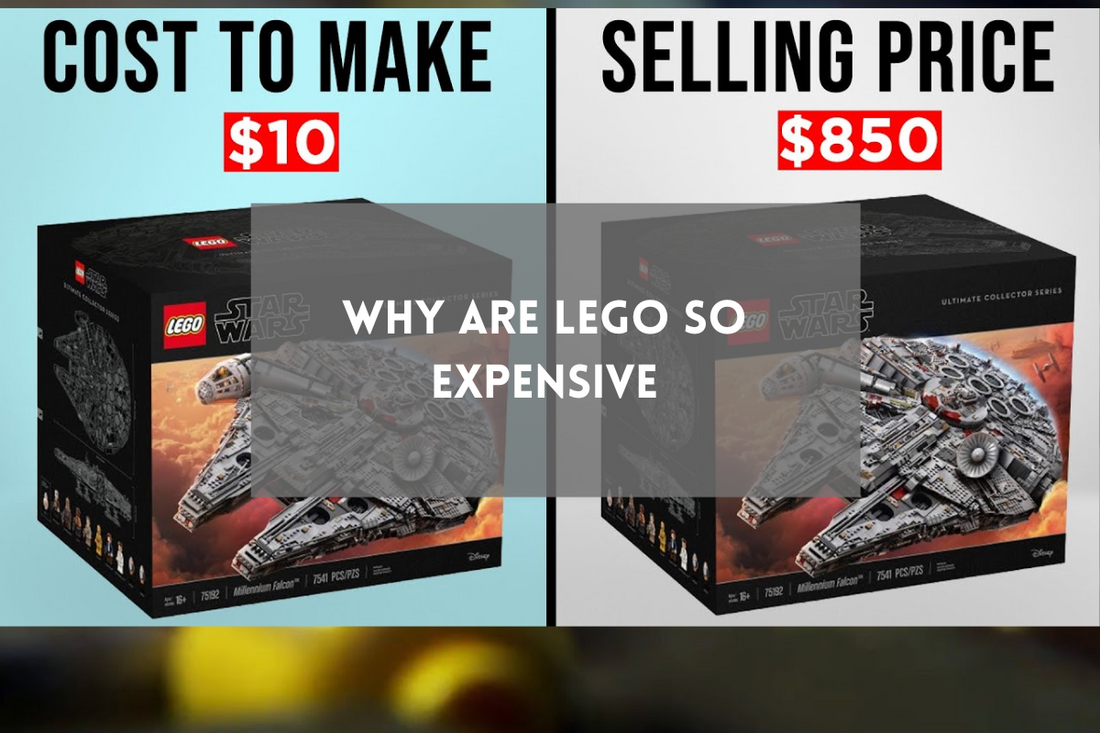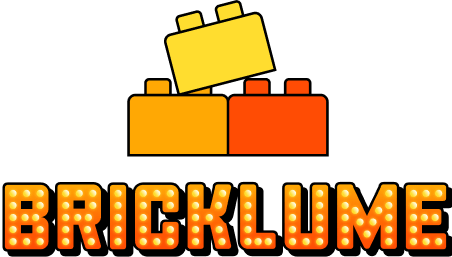
Why Are LEGO So Expensive
Share
Have you ever wondered why are Legos so expensive? What started as a simple children's toy has become a global phenomenon, with some sets costing more than the latest smartphones. But how did Lego transition from wooden playthings to the coveted, and sometimes pricey, plastic bricks we know today?
From Wooden Toys to Plastic Dreams: The Origins of Lego
The Humble Beginnings
The Lego story begins with Ole Kirk Christiansen, a carpenter from Denmark. In the late 1940s, he transitioned from woodworking to crafting wooden toys. These toys found early success, laying the foundation for what would become a toy industry giant.
The Plastic Revolution (and Inspiration?)
In 1949, Christiansen took a gamble by embracing plastic bricks. Plastic was cutting-edge technology at the time, representing a new frontier in toy manufacturing. It's interesting to note that Lego wasn't the first to explore this material; patents from a company called Kitty Craft in 1939 and 1945 showcase similar ideas. It makes you wonder how much inspiration Lego took from those early designs.
Early plastic bricks didn't immediately capture the hearts of children. Lego had to persevere, innovating to draw kids away from traditional wooden and metal toys.
The "System of Play" is Born
Initially, Lego sets were simple boxes of bricks without instructions. In 1955, Lego released the "Town Plan" set, a more structured version of the sets we recognize today. This release solidified Lego's "system in play," a philosophy centered on intercompatibility. The idea was that every brick should fit together, withstand the test of time, and allow children of all ages to build without limits.
Lego's commitment to this system is remarkable. Bricks made in the company's early days still connect seamlessly with those manufactured today. Of course, there are a few exceptions. Remember the "brown brick problem"? Some brown bricks made during a certain period were more fragile and prone to breakage.
Perfecting the Brick: The Magic of the Stud and Tube
In 1958, Lego patented the ingenious stud-and-tube coupling system. This design revolutionized Lego construction, enabling larger, more stable builds. What's truly amazing is that Lego continues to use this design for its bricks to this day, a testament to its enduring effectiveness.
Expanding the Palette: Themed Sets and the Rise of Creativity
From Simple Bricks to Creative Mediums
In the early days, Lego creations tended to be blocky, primarily using classic rectangular bricks. However, the 1970s marked a turning point as Lego began introducing themed sets. The 1978 Space Cruiser, with its 170 pieces and a price of $10 (about $48 today), is a prime example. Lego dubbed these themed sets as the "system within the system." New elements were added, like colored transparent parts and thrusters.
The Impact of New Parts
These new pieces expanded the creative possibilities of Lego. As Dave, a Lego Masters contestant, put it, "Your limitations are the bricks that exist, so every time a new piece or a new color gets added, it's exciting." These additions transformed Lego from a mere toy into a creative medium, leading to the release of countless new parts, sets, and the iconic mini figure.
To further enhance your creative LEGO builds, consider exploring LEGO light kits from Bricklume. These kits can add a whole new dimension to your creations, bringing them to life with vibrant LED lights.
Cracks in the Foundation: Lego's Near Collapse
The Golden Age and Signs of Trouble
The 1980s were a period of tremendous success and global expansion for Lego. However, by the late 1990s, sales began to decline, and the company faced its first-ever financial losses.
Overexpansion and Misguided Investments
Lego had overextended itself, investing heavily in theme parks, media properties, and merchandise, while neglecting its core product: the brick. They released sets like Galidor that de-emphasized building. These sets featured "one-off" pieces that didn't integrate well with the Lego system. As one executive noted, profitability was declining, yet investment continued as if the company were growing strongly. In 2003, Lego's annual report described it as "a very disappointing year."
Facing the Digital Threat
Company leaders also worried about whether physical toys could compete with the rise of video games.
Lifelines: Bionicle and Star Wars
Bionicle, the company's best-selling product for four years, provided a much-needed boost. The Star Wars sets, launched in 1999, were also a resounding success. Licensed sets were becoming increasingly crucial for Lego's survival.
The AFOL Awakening: Adult Fans Save the Day
The Secret World of Adult Lego Fans
While Lego focused on children, a passionate community of adult fans of Lego (AFOLs) was quietly growing.
From Child's Play to Creative Outlet
Even the most complex sets had age recommendations that didn't deter adults from diving into the hobby. Dave, the Lego Masters contestant, humorously mentioned buying Lego instead of going out to bars.
The Dedicated Lego Room
For many enthusiasts, having a dedicated Lego room or base is common. Dave's Lego room contains an estimated 100,000 to 500,000 individual Lego elements, worth approximately $50,000. He even has a container specifically for minifigure heads!
The Meaning of a Lego Collection
Dave sees his Lego collection as a way to tell stories and a collection of memories. He explained that building Lego can be a solitary pursuit or a shared experience with family, but it's a hobby that can be enjoyed by anyone.
The Internet Changes Everything: Connecting the AFOL Community
The Power of Online Connection
The internet revolutionized the Lego hobby, enabling builders to connect, share creations, and realize they weren't alone in their passion. Lego became more than a toy; it became a community.
Lego's Initial Resistance
Initially, Lego didn't fully embrace its adult fans. Some executives viewed them as an "irritation" and wanted to maintain the focus on children. In the 1990s, being a fan of something wasn't seen in a positive light, so it's understandable why Lego might have been hesitant to embrace the AFOL community.
The Unstoppable Momentum
Despite the initial resistance, the AFOL community continued to grow, both online and in person.
Conventions and the Resale Market: Fueling the Lego Economy
The Power of Conventions
Conventions provided a platform for fans to connect and showcase their impressive creations. These events also served as valuable marketing opportunities for Lego.
The Thriving Resale Market
Lego retires sets every few years, creating a secondary market for collectors and those seeking specific pieces. This artificial scarcity has transformed Lego into an investment for some.
Building vs. Investing
Justine, another avid collector, primarily collects to build but admits the increasing value of sets gives her pause before opening them. She even bought a set twice because she forgot she already owned it! The Harley Quinn minifigure in one of her sets is worth $400, while the set itself is valued at $1,200.
Spare Parts Power Innovation
Rare minifigures can fetch hundreds of dollars on the resale market. The availability of spare parts empowers builders like Dave to create incredible designs.
The Turnaround: Lego Listens to Its Fans
Embracing the AFOL Community
Lego realized it was missing out by ignoring its passionate fan base. The company cut costs, sold theme parks, and refocused on its core business of building with bricks. It was time to embrace adult fans.
Grassroots Collaboration
In 2004, Lego shifted its business strategy, seeking input from its adult fans to improve its products. The company aimed to recapture customer excitement and recognized the value of its most dedicated enthusiasts.
The Millennium Falcon Shift
The 2007 release of the $500 Millennium Falcon (with over 5,000 pieces and a 16+ age recommendation) signaled a significant change in Lego's approach, showcasing increased complexity, higher prices, and a new target audience.
Hiring the Fans
Lego even began hiring AFOLs to work for them, recognizing their expertise and passion.
Lego Today: Products for Kids and Adults
Licensed Sets
Licensed sets have proven to be a successful strategy for attracting customers who might not typically buy Lego.
The KOL Industry
The rise of pop culture fandoms has coincided with the growth of the Kidult (KOL) industry, which produces products aimed at adult consumers that are often associated with childhood.
Targeting Adults Directly
In 2020, Lego released its first 18+ set, marking a clear shift towards catering to the adult market. Since then, dozens of products specifically targeting adults have been released, including complex sets like the Star Wars AT-AT and more display-oriented sets like dried flowers.
"Adults Welcome"
Lego's website now explicitly welcomes adults, allowing the company to reach a broader customer base and price point.
Acquiring Bricklink
Lego acquired Bricklink, the largest online Lego resale marketplace, in 2019, further solidifying its commitment to the AFOL community.
You can find a wide range of LEGO sets and accessories, including lighting kits, at Bricklume.
The Price of Bricks: Are Lego Sets Really That Expensive?
The Lego Renaissance
Lego's turnaround strategy worked, and the company's revenue has increased tenfold.
The Price Point
Seeing Lego sets priced at hundreds of dollars can be surprising. But are they really that much more expensive than they used to be?
Price Per Piece
One way to assess value is by looking at the price per piece, calculated by dividing the set's price by the number of pieces included. While not a perfect measure, it provides a general indication of value.
Complexity and Set Size
Sets are generally more expensive today because they are more complex and contain more pieces. Lego could produce a smaller, cheaper Millennium Falcon, but there's clearly a market for the larger, more detailed version.
The Enduring Appeal of Lego
Creative Problem Solving
The beauty of Lego lies in its ability to foster creative problem-solving. Even with unlimited pieces, the challenge of building with what you have can spark ingenuity.
Beyond the One-Hit Wonder
Lego's focus on the brick has allowed it to transcend fleeting trends and establish a lasting presence in the toy industry.
Nostalgia and Intergenerational Connection
For many, Lego evokes a sense of nostalgia, connecting generations through a shared love of building.
The Future of Lego
The hope is that Lego will continue to become more accessible to everyone, regardless of background or budget. It's not about how much you have, it's about the ingenuity and creativity you bring to the bricks.
Conclusion
From its humble beginnings as a woodworking shop to its current status as a global toy empire, Lego's journey has been filled with innovation, challenges, and triumphs. While some sets may come with a hefty price tag, the enduring appeal of Lego lies in its ability to spark creativity, foster intergenerational connections, and provide endless hours of building fun.


